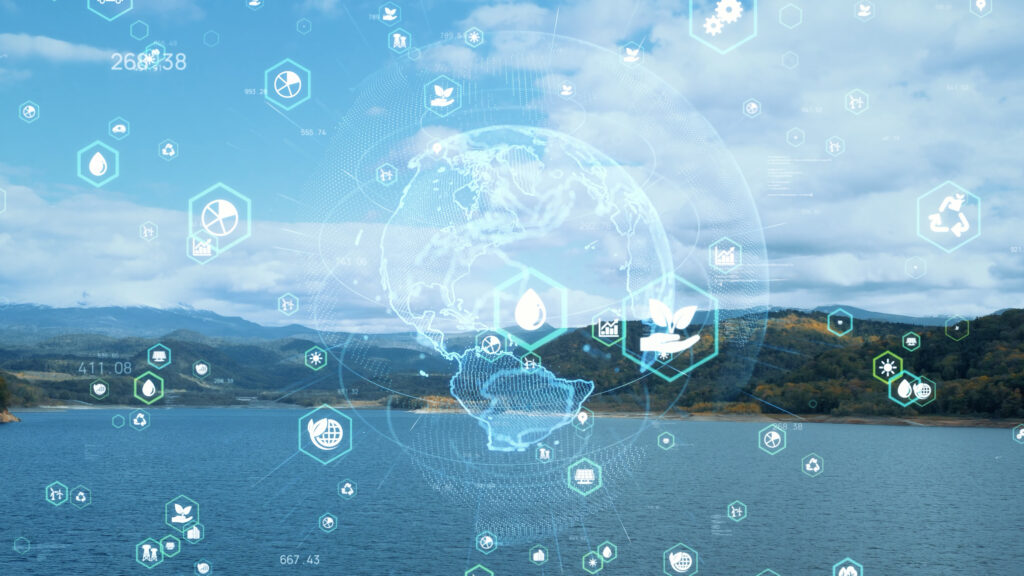
Kelly Bennett
Co-Founder & CEO
Water resides at the convergence of so many matters: human health and economic output, environmental health and stability, energy production, and energy transition; the list is as long as you want to make it. Its critical importance to so many diverse interests makes water simultaneously exciting and confounding. Recent debates surrounding management of the Colorado River exemplify the complexity of today’s water issues and foreshadow others to come: massive, systemic needs have both broad-based and very local implications, many of which have their own knock-on effects that can impact people and landscapes in ways not yet contemplated. At the end of the day, the most fundamental questions are: Who gets to use water, for what, when, and where? Increasingly, society also wants to know the ‘why’, and the priority that accompanies the answers to all of those questions. Contextualizing these impacts requires a global perspective of water that few organizations are ready to take.
I often find myself dreaming of an economic model that could help inform more systems-driven decision-making, linking water management decisions to up- or downstream implications. It is incredibly complicated. Yet understanding how (and where) industrial water lifecycles interact (‘industrial’ is used broadly here; even conservation is fundamentally water-intensive) should increase corporate viability and mitigate long-term risk in projects and businesses. Increasingly, we will see new industries clash with established industries and one another over water use and water-related issues. Long-term value will be created by organizations that have invested in this understanding. Take energy transition, for example.
Water-Intensive Industries
Unconventional oil and gas production is very water intensive – after all, water is the most important ingredient in hydraulic fracturing. Saltwater disposal is also water intensive as wastewater from oil and gas is injected into deep aquifers that tend to contain very saline water. Thus industry ‘uses’ the aquifers (and, by default, their water contents) to capture waste. Over the last decade, the oil and gas industry has made tremendous progress advancing science and technology to allow for the reuse of produced water in hydraulic fracturing. This reduces reliance on water supplies that could go to other uses, as well as reliance upon deep aquifers to dispose of waste. Emerging technologies in energy transition are also very water intensive, both directly and indirectly, and would benefit from considering water lifecycle risk early in the game as well as understanding their water use in a broader context. If lessons learned from the oil and gas business are any indication, once critical water resource use and its implications for affected people and places become widely known, they immediately create risks for an entire industry.
Lithium mining requires a significant amount of water, around 500,000 gallons per ton of lithium, most of which is consumed through evaporation. Green hydrogen requires a significant supply of high-quality water as a feedstock, nearly all of which is consumed through the process of creating the hydrogen. Carbon capture and storage (CCS) in Class VI wells currently being pursued in the recent market boom is also water intensive. Similar to saltwater disposal in oil and gas, these CCS facilities often rely on vast saline aquifers as the medium to contain sequestered carbon. In some places, these competing industrial water requirements overlap, both with each other and with other human and environmental water needs. As various projects progress through their respective regulatory and internal business processes, their backers should consider more global understanding of water, whether that be quantity, quality, chemistry, hydrogeology, etc., and any implicit liabilities that they entail. Perhaps there are unrecognized synergies or competitive risks (including from other industries) that could be addressed in planning, rather than realized after significant investment dollars have already been deployed.
The Role of Data in Understanding Global Water Use
Data is at the core of this global understanding. When we set out to create the West’s first integrated water rights databases more than eight years ago, it was with the commitment to build adaptable data models and enabling technologies to allow us to add more and more related information and leading analytical tools. Along the way, the database has morphed numerous times as the water lifecycle in the oil and gas industry impacted (and was impacted by) innovation and the stark realities of water use. Now, we find ourselves at another crossroads, broadening our data and analytical tools again to help our customers understand the interactions between water lifecycles in industries that rely on related resources. Stitching together granular data that integrates to inform a global view of water in energy transition is incredibly important and exciting and will require experimentation and a lot of collaboration. Be sure to reach out if you would like to learn more about what the B3 team is up to.




